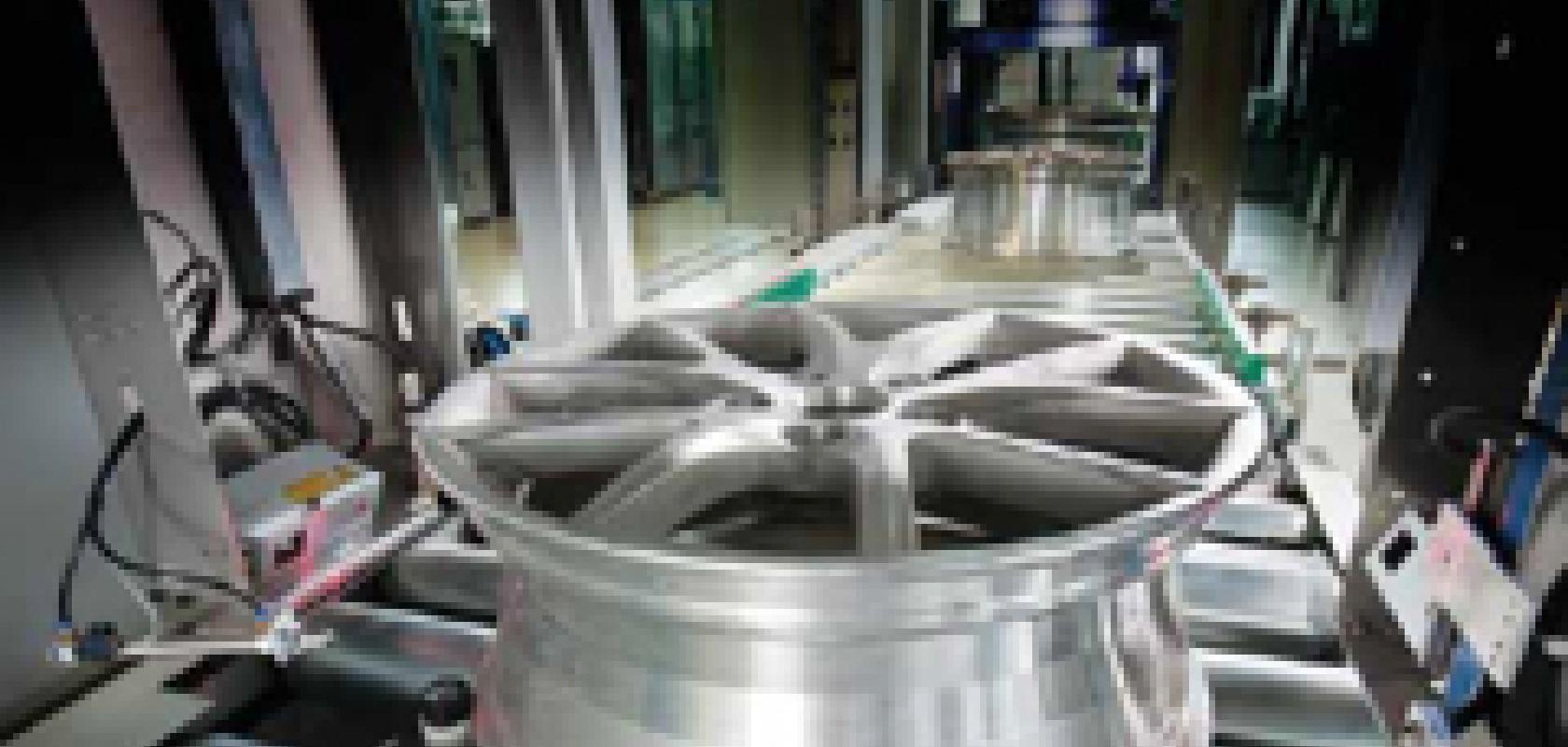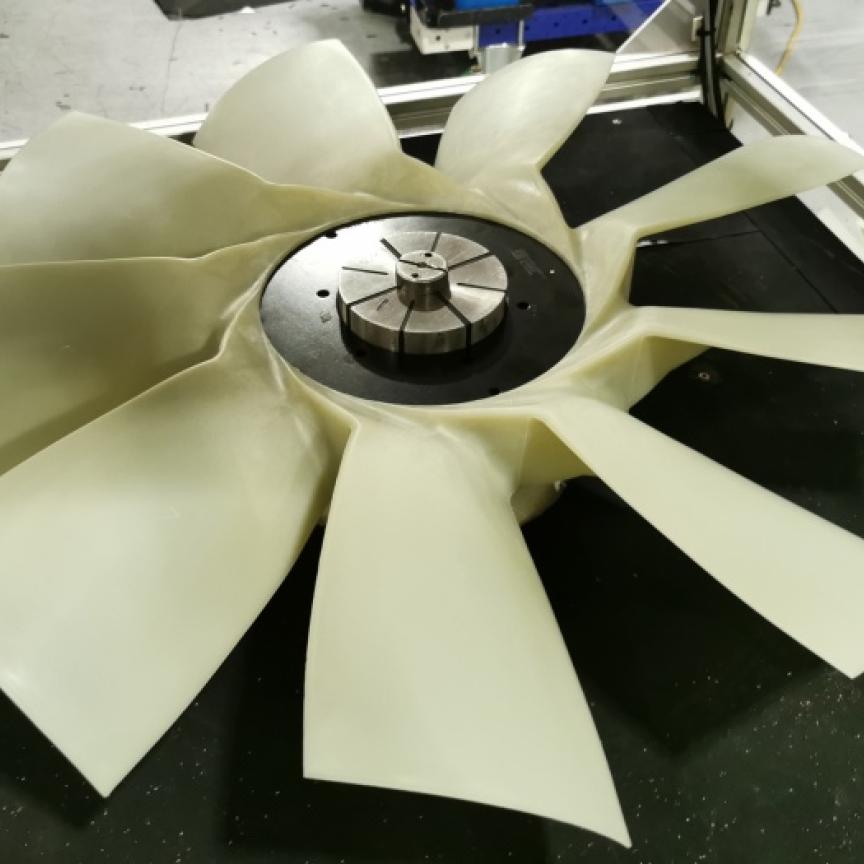Although manufacturing might not be Europe’s strong point at the moment, it still has a reputation for excellence in making equipment for manufacturing. One of the reasons why the European machine vision industry remains reasonably healthy is that it exports a lot of systems to Asia, where industrial production is booming.
It was noted by leading figures in the machine vision industry at a recent roundtable discussion in Frankfurt that Chinese factories are increasingly turning to Europe for vision solutions because of the established expertise European companies possess in this area. This might not always be the case though. Dr Dietmar Ley, CEO of camera maker Basler, who took part in the roundtable discussion, summed it up best in speaking to Imaging and Machine Vision Europe: ‘The situation for equipment makers in Europe is pretty good, but the question is will it stay that way?’
Ley said equipment makers in Asia are becoming more active and that, as certain regional markets in Asia mature, less machinery will be imported. So what can Europe do to stay competitive among emerging manufacturing superpowers like China?
The Control show held in Stuttgart in May will showcase the latest equipment for quality assurance including machine vision systems (see panel). In particular, the Fraunhofer Vision Alliance, a network of 17 Fraunhofer institutes, will present a special show for ‘Contactless Measuring Technology’.
Dr Dirk Berndt from the Fraunhofer Institute for Factory Operation and Automation (IFF), which will be exhibiting at the show as part of the Vision Alliance, believes there needs to be closer collaboration between manufacturing, machine vision and research organisations for European manufacturing and the machine vision sector to stay competitive for the next 10 or 20 years. ‘Machine vision plays an essential role in keeping European manufacturing competitive,’ he stated. ‘There is a close relationship between the European manufacturing and machine vision industries. European manufacturers are able to produce complex products efficiently and with a very high level of quality. However, there needs to be more done in terms of education and training in manufacturing practices. This is a big issue in Germany and other European countries too.’
Fraunhofer IFF will be exhibiting inline inspection technologies applicable for 3D geometry measurements, as well as for assembly inspection. The systems are designed to be more flexible to changes in production conditions, something Berndt sees as being important to adapt to changing manufacturing practices. One of the changes he noted is that there is a lot more demand for customised products. The consequence of this is smaller batch sizes, which, Berndt said, is a change for manufacturing and a ‘major challenge for machine vision’.
He gives the example of car makers, which are now producing more vehicle models, meaning greater variation in the component parts. ‘The forerunner in applying machine vision technologies is the automotive industry,’ Berndt commented, ‘because they manufacture products with large batch sizes. Machine vision is particularly suited to quality assurance of large batch sizes of products.’ Now, however, there is more variation in automotive parts, which poses a challenge for the vision systems employed to inspect them.
Quality assurance for manufacturing can be perceived as something that can add value to the sales process, according to Robert Pounder, technical director at Olmec-UK, a vision system integrator. ‘If you’re manufacturing webs of materials, for example, at high speed, there are companies that can manufacture that in the UK and Europe, and in China,’ he said. ‘So, you need to do something to make your product stand out from the competitors. If you’re claiming a high-quality product, you want to be able to provide the checks, the documentation and the support to say this particular batch has met all of the quality requirements.’
Pounder gives the example of film materials in which hundreds of thousands of laser holes are cut to prolong food shelf life. ‘The customer wants evidence that the product is fit for purpose, that the holes are in specification, and that they’re all there. In this instance, the IP in that quality assurance solution is high. Companies are investing in the QA technology so that they can leverage that sales point and differentiate the product in a market driven by cost.’
Many of the big manufacturers will have production plants in Asia and other emerging countries where labour is cheap. In an attempt to re-energise the manufacturing sector in Europe, the European Commission has set a target for 20 per cent of EU GDP to be generated from manufacturing by 2020 (it’s currently around 16 per cent). Where Europe might have an advantage over Asia is in the knowhow regarding machine vision and quality control.
‘Generally, Europe still has good ideas, good companies, and good competency in consulting customers to understand the problem and find a good solution,’ remarked Ley. ‘If Europe has an advantage over Asia, then I see it more in terms of innovation. European companies still have an edge over Asian companies for developing something completely new.
‘On the other hand, you really need to make sure that you stay ahead of the herd in terms of innovation speed, because Asian countries have so many well-educated young people, it means European companies really need to run to make sure that they’re not left behind,’ he added.
In terms of equipment makers like machine vision suppliers, European companies tend to perceive themselves as producing higher end, more technologically advanced equipment than machine makers from, for example, China, Taiwan or South Korea, commented Ley. However, he warned that focusing on the high-end of the market runs the risk of not being able to make use of the economies of scale that comes from concentrating on volume markets and improving technology over time. ‘If a company is able to learn and develop competencies in combination with having good economies of scale, then that company can very rapidly grow market share,’ he said.
Ultimately, though, as Pounder commented, companies are global, and just because part of a company’s production facilities are based in Asia the IP will still be at its headquarters. ‘The company is still responsible for making sure the quality of that product is high no matter where it is manufactured,’ he said. ‘It’s not correct to think that just because a product is made elsewhere, that those people won’t be investing in quality control systems.’
Olmec has exported machine vision systems to China, which will ensure the product is manufactured to the same standard as if it were manufactured elsewhere, because of the investment in quality control.
Industry 4.0
Looking ahead, the factories of the future are expected to rely more heavily on computing and the internet, in what is sometimes referred to as the fourth industrial revolution, or Industry 4.0. Ley commented that Industry 4.0 and smart manufacturing will ‘provide significant change to the way things are manufactured and tested, as well as how they are monitored during manufacturing.’
At the Control show, Fraunhofer IFF will be exhibiting systems that use computer model-based techniques to configure inspection systems, calculate measurement protocols, and analyse the data.Berndt commented: ‘In the future, some assembly steps are going to be made manually by humans but supported by machines. Here, I see further big potential for the European machine vision industry to make visual systems that give information to the operator about which position and which orientation assembly steps should be made.’ The idea is to give feedback to the operator about each assembly step and guidance for subsequent steps and reworking. The vision systems can also be used to track the operator as they move through the production plant, as well as the parts themselves.
The other technology under development, Dr Berndt noted, is the ability to simulate the inspection process based on CAD models of the machine vision setup combined with CAD models of the part. This would mean production doesn’t need to be stopped to adjust the machine vision equipment to accommodate a new part; software can be used to test and simulate the inspection criteria and conditions for the component.
According to Pounder, data is going to be more prolific in manufacturing. ‘Medical and pharmaceutical companies are at the forefront of using data-driven techniques in manufacturing along with the automotive industry. The likelihood is that this is going to translate into other industries that currently don’t have that requirement,’ he said.
He also commented that the manufacturers are now helping shape how high the resolving power of the vision system should be, for instance, rather than relying on the machine vision systems supplier to guide them as to what they need. ‘That’s a shift,’ he said. ‘There’s much more training that companies are putting into their staff in lean manufacturing techniques and it is all statistically led.’
For machine vision companies building a presence in Asia, Ley said that they need to think about where the value is created. For a European tech company, most of the core knowhow regarding the innovation process is still currently at the headquarters in Europe. Ley noted that the company then has to ask whether it can understand the demand patterns well enough in the offshore markets while developing its products in Europe. ‘That’s certainly a challenge for small and mid-sized companies. Sooner or later you probably won’t have a good enough fit in terms of your products if your creative forces are too far away from your target market.’
There is certainly a drive to bring back manufacturing into Europe. Berndt commented: ‘The manufacturing industry is the basis for Europe’s prosperity. European machine vision companies have to support the large European OEMs in Asia, but there should be a focus on European manufacturing, because otherwise the quality of European lives will be reduced in the future.’
And for the factories of the future, Europe has the opportunity to play an instrumental role, as Ley stated: ‘People have already started thinking about these [smart] manufacturing practices. I think it’s a big chance for the European industry to shape these processes. This has a lot to do with creativity, about doing things completely different, taking a fresh approach, so I would see a lot of opportunities for European companies.’
Taking place from 6 to 9 May in Stuttgart, Germany, the Control trade fair will showcase technology for quality assurance in manufacturing, including machine vision. Along with the exhibitors, the Fraunhofer Vision Alliance will present a special show for ‘Contactless Measuring Technology’, and will celebrate its 10th anniversary at Control this year.
At the show, Z-Laser (www.z-laser.com) will present its improved LP-HFD laser projector which includes the ZFSM fibre-coupled laser source for high-quality laser projections. The long-term benefits of using the ZFSM laser source inside the LP-HFD include greater durability and a constant beam quality. The applications for laser projections are various, as optical positioning systems are valuable in quality control in all sectors. The projector is available with up to 40mW in a red (638nm) or green (520nm) optically coupled laser diode, and offers standard projection angles of 60° or 80°.
Also exhibiting will be LMI Technologies (www.lmi3d.com), which will feature the Gocator 3D smart snapshot sensor and the HDI 120 3D scanner. The Gocator snapshot sensor is an industrial scanning solution that delivers 3D point cloud acquisition, measurement, and control decision capabilities in a single package. It has the ability to acquire high-resolution, full-field scans quickly to inspect multiple features of parts with full 3D visualisation and make control decisions. This inspection solution provides assurance that consistent product quality levels are met during final product assembly.
The HDI 120 3D scanner is a small advanced 3D scanning system using blue LED projection technology. The system generates high-resolution digital 3D models accurately from real world objects. Designed for demanding industry applications, it is easy to integrate or embed 3D scanning capabilities into a system or device using the HDI 120.


